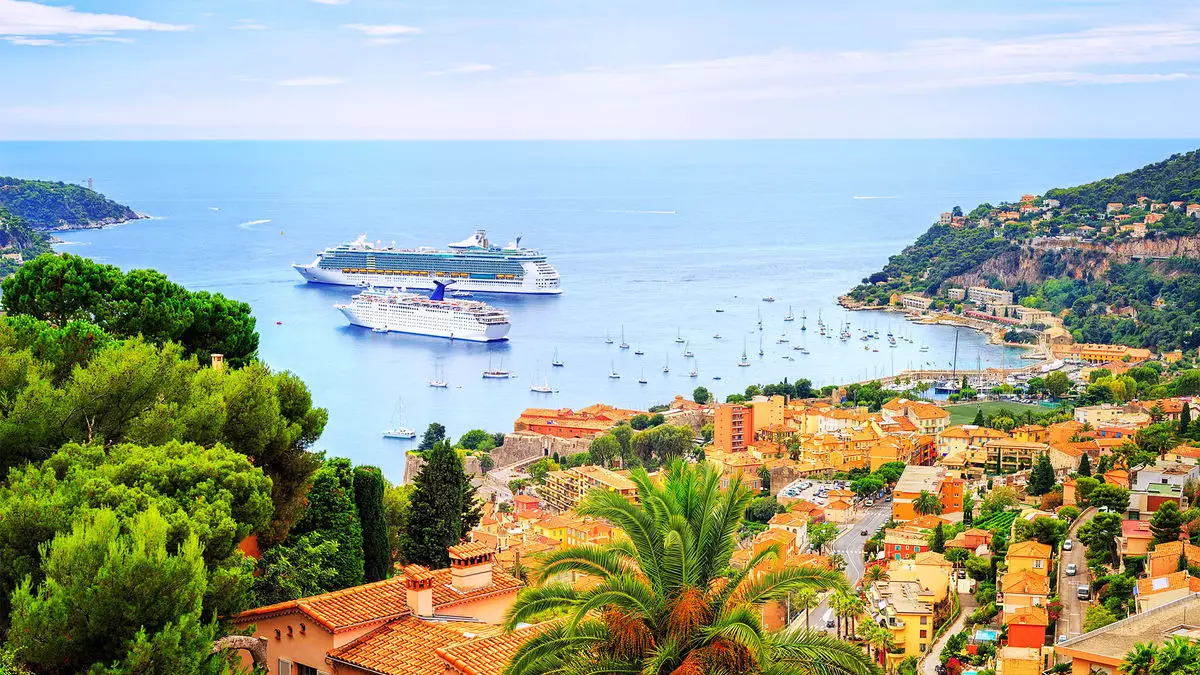The cruise industry is facing increasing scrutiny and restrictions as popular destinations grapple with the effects of overtourism. The picturesque Nice-Côte d’Azur region in the south of France is the latest battleground where cruise executives are fervently trying to avoid a significant blow to their operations. The proposed ban specifically targets cruise ships with capacity exceeding 900 passengers, a move that has sparked a heated debate over the balance between tourism and environmental sustainability. Amidst these tensions, stakeholders are urging a more holistic approach to tourism management, seeking to balance local community needs with the economic benefits of cruise tourism.
In late January, Nice’s mayor, Christian Estrosi, signed a decree that would prevent large cruise ships from discharging passengers at the ports of Nice and Villefranche-sur-Mer starting July 1. This comes amidst a local government sentiment that cruise tourism, particularly in its larger forms, contributes to pollution and a negative impact on community resources. Estrosi’s rationale is clear: he aims to stem the tide of waste generated by a growing influx of passengers, many of whom do not contribute significantly to the local economy but leave behind environmental burdens.
The ships likely to be affected by this prohibition represent a significant portion of scheduled cruise calls. Notably, this restriction could eliminate two-thirds of the expected arrivals in Villefranche-sur-Mer, a key port in Mediterranean itineraries. With loss projections exceeding $10 million locally and over $600 million regionally, the implications for local economies and the cruise industry as a whole are significant.
In reaction to the decree, the Cruise Lines International Association (CLIA) and multiple maritime organizations have urged local officials to engage in dialogue and economic impact assessments rather than move forward unilaterally. They argue that tourism regulations should account for broader economic benefits, particularly in regions heavily reliant on cruise visitor spending. The situation reflects a tug-of-war between short-term local governance actions and the long-term viability of tourism-dependent economies.
Samuel Maubanc, the director general of CLIA in Europe, emphasizes the importance of a balanced approach to tourism management, advocating for solutions that foster community wellbeing while still encouraging the flow of tourists. This sentiment underscores a pressing need for collaborative strategies that mitigate the negative aspects of tourism without fully sacrificing economic potential.
The challenges facing the cruise industry in Nice are reflective of a broader trend across Europe. Cities like Venice, Barcelona, and Amsterdam have taken similar approaches to curb overtourism and the associated damages. These locales have recognized the potential dangers of excessive visitor traffic and are exploring various ways to protect their cultural and environmental heritage while navigating economic implications.
However, these shifts can inadvertently create vacuums that smaller or emerging cruise lines may exploit—potentially altering booking dynamics and travel preferences in unforeseen ways. In this evolving landscape, smaller vessels may become more attractive as travelers seek intimate experiences beyond standard cruise offerings. Already, Ponant has announced new itineraries from Nice that cater to this emerging demand trend, positioning themselves as alternatives to larger competitors.
Advisors and industry experts alike are closely monitoring how these restrictions will reshape cruise tourism. As travelers gravitate toward options that promise less crowded experiences, the demand for small-ship cruises may rise. This redirection could also encourage travelers to explore alternative ports or adjust their planning behaviors to prioritize less visited destinations.
Jackie Friedman, president of Nexion Travel Group, points out that these developments might instigate shifts in consumer booking patterns, where advance reservations become vital due to increased interest in smaller, more personalized travel experiences. If cruise lines can adapt to the new normal by diversifying itineraries and enhancing the appeal of smaller vessels, it may lead to an overall enrichment of travel experiences.
As the cruise industry grapples with rising restrictions, the ongoing discourse between local governance and tourism economics will undoubtedly shape the future of travel along the French Riviera and beyond. While it is essential to address the environmental consequences of tourism, it is equally important to preserve the economic tapestry of communities that thrive on visitor spending. A collaborative approach that balances sustainable practices with the vibrancy of cruise tourism will ultimately serve to benefit both locals and tourists alike, ensuring that the allure of destinations like Nice and Villefranche-sur-Mer remains intact for generations to come.


Leave a Reply